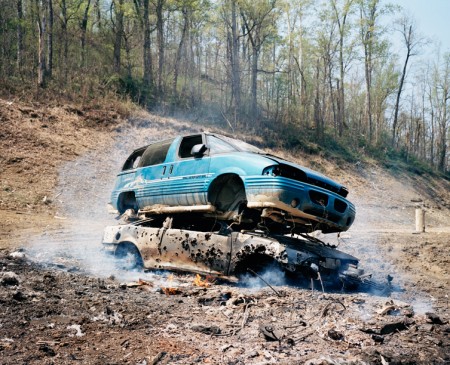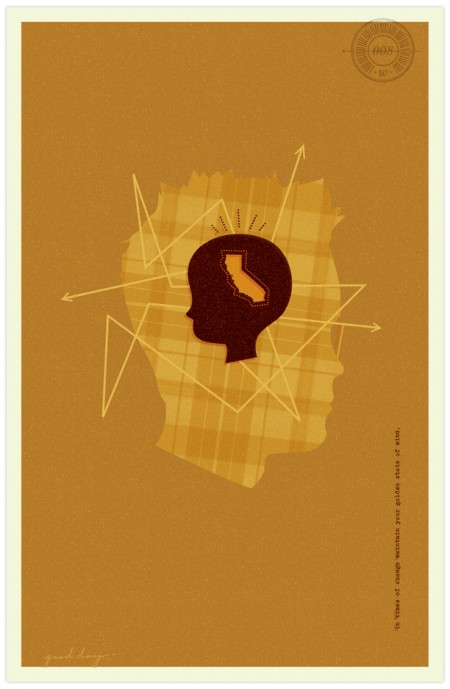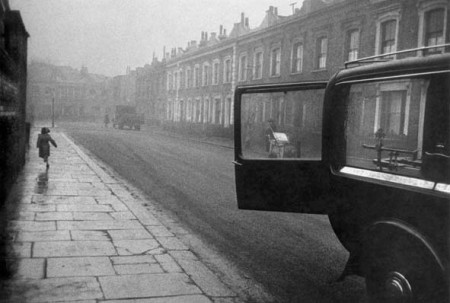

Lytro released its revolutionary Light Field Camera last week. Apart from its unique design, the camera uses a different type of sensor to capture light fields, allowing photographers to focus images after shooting them. It also allows users to capture three-dimensional shots with a single lens. Check out their picture gallery for a chance to see light fields in action.
I can see this technology being particularly useful in point-and-shoots and Blade Runner-esque “enhance” sequences, but I’m really interested in its creative applications. On one hand it takes away from the artistic choices available to photographers, but on the other hand it opens up a whole new set of possibilities. Either way it will be interesting to see what people come up with.
Lytro via All Things D








Julian Montague has collected a wealth of inspirational book covers from the 1950s-80s. These are just a few of the great designs I came across while browsing through his Daily Book Graphics project. You can see the rest of the set on his Flickr, or check out previous posts for more vintage book covers.
via Montague Projects





Looking at Thomas Prior’s work is like some kind of visual catharsis for me. The energy and emotion he captures in his photographs is simply captivating. See more here.
via Booooooom
Moog just released their Animoog synthesizer app for the iPad and it looks impressive. Get it now for 99 cents before it jumps to the regular price of $29.99. Anybody have a chance to try it out and care to share their experience in the comments?






Tom Eckersley (1914-1997) was an English poster artist known for his use of bold, bright colors and simple block shapes. During WWII he was a cartographer for the Royal Air Force and created designs for the General Post Office. In 1947, Art and Industry magazine described his approach to design as scrapping the “non-essential, by the perfect mating of chosen word with chosen picture, he wings the total message.” A year later he was awarded the Order of the British Empire for his services to poster design.
The Visual Arts Data Service has a great collection of his work.
via VADS & WW2Poster





Good Day CA is a self-initiated project by Los Angeles designer Braden Wise. Drawing inspiration from the sights and experiences of traveling on the road, Wise created a set of postcards to chronicle his trip from the Midwest to his new home in California. See the rest of the series here.




These incredible time lapse videos were shot by Dustin Farrell. I’m at a loss for words after watching these; you really have to see them for yourself. Landscapes: Volume One & Two are the first two parts in a planned trilogy, and I can’t wait to see the next one.
You can read more about the making of these videos here.





These chilling images were taken during London’s Great Smog of ’52. For four days the city of London was blanketed by a poisonous smog that reduced visibility to a few yards and led to an estimated 12,000 fatalities. From NPR:
Roads were littered with abandoned cars. Midday concerts were cancelled due to total darkness. Archivists at the British Museum found smog lurking in the book stacks. Cattle in the city’s Smithfield market were killed and thrown away before they could be slaughtered and sold — their lungs were black.
On the second day of the smog, Saturday, Dec. 6, 500 people died in London. When the ambulances stopped running, thousands of gasping Londoners walked through the smog to the city’s hospitals.
The lips of the dying were blue. Heavy smoking and chronic exposure to pollution had already weakened the lungs of those who fell ill during the smog. Particulates and acids in the killer brew finished the job by triggering massive inflammations. In essence, the dead had suffocated.
Some 900 more people died on Tuesday, Dec. 9, 1952. Then the wind swept in unexpectedly. The killer fog vanished as quickly as it had arrived.
It sounds like the plot of a post-apocalyptic film, but the event opened the public’s eyes to the deadly effects of pollution and led to significant developments in environmental research, government regulation, and public awareness of the relationship between air quality and health.
via Another Nickel in the Machine



































